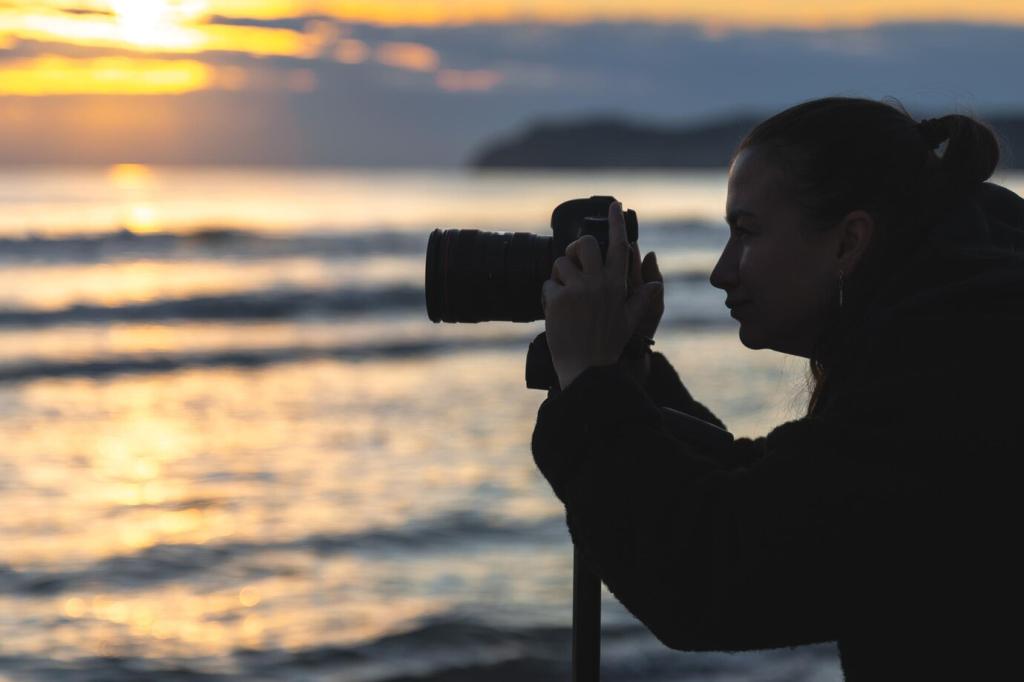
Photographer's Etiquette: Respecting Nature on Trails
Chosen theme: Photographer’s Etiquette: Respecting Nature on Trails. Welcome, trail-wise storytellers! Here we celebrate images made with humility, patience, and care for wild places. Learn practical habits, swap stories, and join a community that puts ecosystems first while still bringing home unforgettable frames.
Leave No Trace for Lens Lovers
Microtrash can outlast your memories. Collect lens wipe wrappers, battery tabs, tape bits, and silica packets before they scatter in the wind. Carry a zip bag for crumbs and fiber threads from cleaning cloths. Add your favorite low-waste kit tips in the comments, and help others shoot greener today.
Know the Safe Distances
The National Park Service recommends at least 25 yards (23 meters) from most wildlife, and 100 yards (91 meters) from bears and wolves. A compact rangefinder or marked trekking pole helps maintain space. If an animal changes direction or stares intently at you, increase distance immediately and reset your plan.
Let Behavior Be Your Cue
Ears pinned, tail flagging, frozen posture, or repeated alarm calls often mean stress. If feeding stops because of your presence, the photo is not worth it. Step back, lower your profile, or leave entirely. Tell us about a time you read a warning sign correctly and how it changed your approach.
Long Lenses, Not Long Chases
Reach with optics, not footsteps. A 300mm plus teleconverter, or a lightweight 400mm, keeps you ethical while filling the frame. Use a bean bag on a rock rather than creeping forward. Patience pays: staying put often brings subjects closer on their terms. Subscribe for field tests of lightweight long-lens setups.

Protecting Plants and Fragile Habitats
Spring ephemerals, mosses, and cryptobiotic soil create entire micro-worlds. Avoid kneeling directly on plants; brace with trekking poles from the trail or use a small ground pad on rock. If your lens cap rolls into delicate growth, resist the impulse to chase it. Share how you protect understory life while shooting.
Protecting Plants and Fragile Habitats
Mud season, alpine thaw, and vernal pools magnify each footprint. Choose boardwalks or gravel when available, even if the angle feels imperfect. A clean conscience is part of the composition. Mark trail closures in your map app before departure, and drop a note below about your region’s seasonal best practices.
Trail Culture: Sharing Space with Hikers and Rangers
On narrow paths, step aside early, collapse tripod legs, and keep gear out of the tread. Avoid blocking blind corners and popular overlooks during peak times. A smile and quick thanks go a long way. What courtesy gestures do you appreciate most on crowded trails? Tell us and inspire better habits.
Gear Choices That Reduce Impact
Tripods and Trail Width
Choose compact legs that do not sprawl across the tread. Use a rock bag for stability instead of spreading feet into vegetation. Skip spiked feet on wooden boardwalks and living logs. Share your favorite stable yet small setup, and we will compile a community list of trail-friendly tripod solutions.
Silencers and Soft Colors
Wrap metal buckles and trekking pole tips to prevent clanking. Mute your shutter and disable flash by default. Neutral clothing helps you blend without startling wildlife or hikers. Even lens hoods can squeak; tighten softly. What simple noise-reduction hacks work for you? Drop them below and help keep trails peaceful.
Power Smart, Drones With Care
Carry enough batteries to avoid frantic detours. Know local drone regulations, no-fly zones, and wildlife harassment laws before launching. Many parks prohibit drones entirely; always verify. If drones are allowed, maintain generous distances and avoid nesting seasons. Comment with helpful regulation links for your region to guide fellow readers.
Storytime: The Shot I Did Not Take
At sunset, a meadow lit with shooting stars begged a low, center-of-the-flowers angle. I stayed on the trail, lifted my camera on a trekking pole clamp, and used a 200mm to compress layers. The photo glowed, and the blossoms remained untouched for the next hiker’s joy.
Storytime: The Shot I Did Not Take
Restraint is part of composition. The decision to protect a place becomes visible in your portfolio’s integrity. Viewers sense respect in undisturbed petals and natural behavior. Share a moment when you walked away from a tempting shot and felt proud later; your story can guide someone tomorrow.

